Prior to the development of circular, corrugated, galvanized steel grain bins, prefabricated, non-corrugated steel bins were used because of cost, portability, rodent resistance and waterproof features, but bin capacity was limited. In the 1920's, corrugated bins, which were larger in size and could support greater loads, were developed and became commercially available. In the 1930's, research programs advanced their use, notably research by F. C. Fenton at Kansas State College of Agriculture and Applied Science and T. E.
1930s
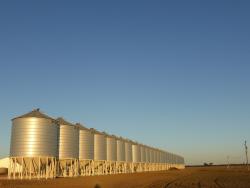

Historically, Farm Tillage Tools Were Designed Without Scientific Knowledge Of How Tools Work The Soil. Thus, A Tool Designed To Operate In One Soil Pulled By A Mule Might Not Operate Satisfactorily In Another Soil Or When Pulled By A Tractor At Higher Speeds. Traction And Flotation Problems Appeared With The Introduction Of Tractors. The Importance Of Developing A Scientific Approach To The Study Of Tillage And Traction Became Apparent During The Transition From Animal To Mechanical Power.
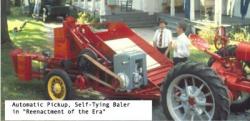
This machine is the world's first successful automatic pickup, self-tying hay baler. Its invention was a significant contribution to the development of American Agriculture. The baler was invented and hand-built in 1937 at Farmersville, Pa., a few miles from here. After testing and improvement, some production models were made at Kinzers, Pa. Balers of this type were first mass-produced in 1940 by the New Holland Machine Company. Dedicated by American Society of Agricultural Engineers 1976
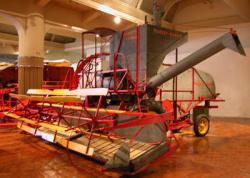
Designated A Historic Landmark Of Agricultural Engineering The Massey-Harris No. 20 was the First Commercially- Successful Self-Propelled Combine Used to Harvest Small Grains Under a Wide Variety of Conditions, World-Wide. Engineered By Thomas Carroll, Chief Engineer, Aided by Robert Ashton and Albert Luke, Principal Assistants, it was First Marketed in 1938 by the Massey-Harris Company. This Combine Opened a New Era an Farm Mechanization and Revolutionized the Grain Harvesting Process. Forty-Four Years Later, This Same Harvesting Principle Continues to be Used Throughout the World.
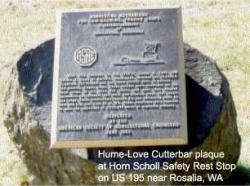
Near This Location In The 1930's James E. Love And Horace D. Hume Of Garfield, Washington, Invented The Flexible Floating Cutterbar And The Tined Pickup Reel To Harvest Low-Growing, Fragile Crops. These Devices Were Developed For The Local Crops Of Dry Peas And Lentils And Were Then Adopted Nationwide To Soybeans And Other Low-Growing Crops That Tangle And Lodge. These Mechanisms Reduced Dry Pea Harvesting Costs By 28% And Crop Loss From 50 To 10%. These Inventions Were Reported To Save The Equivalent Of 2,750,000 Acres Of Soybeans Annually.
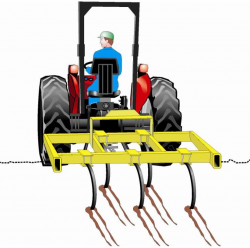
Preventing Wind Erosion Was The Primary Objective Of Fred Hoeme, a Hooker, Oklahoma Farmer, When He Developed A Heavy-Duty Chisel Plow In 1933. Hoeme And His Sons Manufactured And Sold About 2000 Plows From Their Farmstead. In 1938, W. T. Graham Purchased The Manufacturing And Distribution Rights And Established Manufacturing In Amarillo, Texas. The Graham-Hoeme Plow, Marketed As "The Plow To Save The Plains", Was Sold Worldwide.
The Purdue University Airport was the first collegiate owned airport in the United States. It hosted Amelia Earhart for her final adventure, was the training ground for test pilots such a Jimmy Johnson and Ivan Kincheloe, balloonist Malcolm Ross, and astronaut Neil Armstrong. Purdue University Airport and its people and programs pushed aviation’s evolution to new heights and helped expand the frontiers of flight. During WWII, hundreds of U.S. Army and Navy members were trained at the airport.
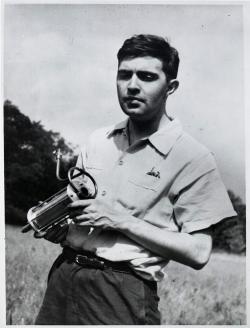
The first company in the United States dedicated solely to the production of the liquid rocket engine, Reaction Motors, Inc. (RMI) was formed in 1941. Its four founders were rocket enthusiasts and members of the American Rocket Society. RMI developed the rocket motors that powered the first supersonic flight, that of the X-1; the retro rockets for five NASA surveyor lunar soft landers; and prepackaged liquid rocket engines for the U.S. Navy Bullpup A & B air to ground missiles, among many other pioneering programs.
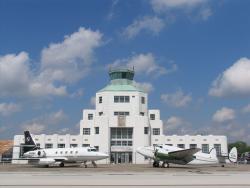
The 1940 Air Terminal is a beautiful and rare example of classic art deco airport architecture from the golden age of flight. Designed by noted architect Joseph Finger, the Terminal was built to meet Houston’s growing role as a major center for air commerce in the 1930s. Its grand opening by the City of Houston took place on September 28, 1940, at Houston Municipal Airport, now known as Hobby Airport.
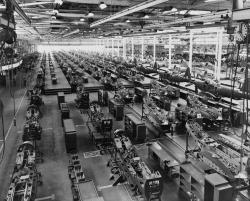
Bell Aircraft, founded in 1935 by Lawrence Dale “Larry” Bell, based its primary manufacturing facility in Wheatfield, New York, where several important aircraft were designed and produced. During the World War II era, the plant produced the P-39 Airacobra and the P-63 Kingcobra fighters. The P-39 was used to great effect by the Soviet Air Force, with the highest number of individual kills recorded by any U.S.-produced fighter aircraft during the war. The plant also designed and manufactured the P-59A Airacomet, the first U.S.
Innovations
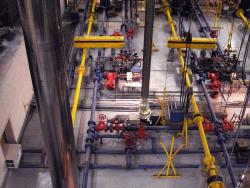
The precision "choreographed" staging of Radio City Music Hall offers size and versatility, unlike any other. Built in 1932 by Peter Clark, its innovative elevator system is a forerunner of other stage designs (including the Metropolitan Opera House) as well as aircraft carrier systems built in…
Read More
With the dawn of the automobile age at the beginning of the Twentieth Century, the entire nation started to demand better roads. In the 1910s, motorists and businessmen in Utah became aware of the possibilities of tourism as a business. Soon the state of Utah and the federal government responded…
Read More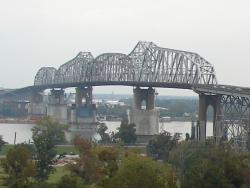
"It remains today one of the great bridge engineering accomplishments for railway and highway bridges built in the country."
- Historic American Engineering Record, Southeast Regional Office, National Park Service, U.S. Department of the Interior, 2005
By the late 1880s, New…
Read More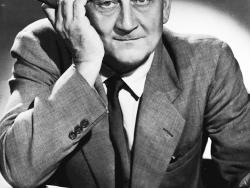
Albert Szent-Györgyi (1893-1986), biochemist, pioneered the study of biological oxidation mechanisms during the 1920s. Between 1930 and 1936, while a Professor at Szeged University, he proved that hexuronic acid, which he had previously isolated, is identical with vitamin C and that it could be…
Read More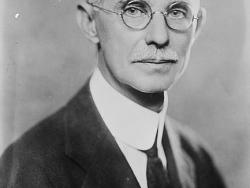
When Georgia chemist Charles Holmes Herty found a way to make quality paper from pine trees in 1932, he also founded an industry that brought much-needed jobs to the depression-crippled south. Paper producers had deemed the plentiful pine too gummy—until Herty's Savannah Pulp and Paper…
Read More
DayGlo fluorescent pigments, a new class of pigments based on fluorescent dyes and polymeric materials, were developed between the 1930s and 1950s by scientists at Switzer Brothers, Inc. (now Day-Glo Color Corp.). These pigments absorb various light frequencies (visible and invisible to the…
Read More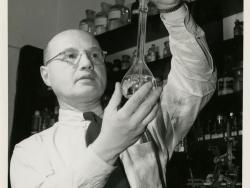
Izaak Maurits Kolthoff (1894–1993) has been described as the father of modern analytical chemistry for his research and teaching that transformed the ways by which scientists separate, identify, and quantify chemical substances. Once a collection of empirical recipes and prescriptions, the field…
Read More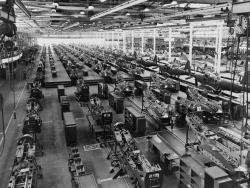
Bell Aircraft, founded in 1935 by Lawrence Dale “Larry” Bell, based its primary manufacturing facility in Wheatfield, New York, where several important aircraft were designed and produced. During the World War II era, the plant produced the P-39 Airacobra and the P-63 Kingcobra fighters. The P-…
Read More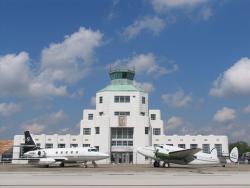
The 1940 Air Terminal is a beautiful and rare example of classic art deco airport architecture from the golden age of flight. Designed by noted architect Joseph Finger, the Terminal was built to meet Houston’s growing role as a major center for air commerce in the 1930s. Its grand…
Read More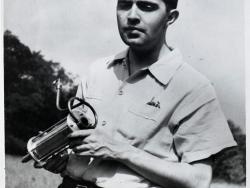
The first company in the United States dedicated solely to the production of the liquid rocket engine, Reaction Motors, Inc. (RMI) was formed in 1941. Its four founders were rocket enthusiasts and members of the American Rocket Society. RMI developed the rocket motors that powered…
Read MoreThe Purdue University Airport was the first collegiate owned airport in the United States. It hosted Amelia Earhart for her final adventure, was the training ground for test pilots such a Jimmy Johnson and Ivan Kincheloe, balloonist Malcolm Ross, and astronaut Neil Armstrong.…
Read More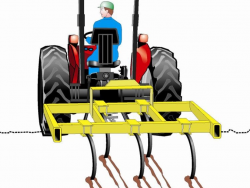
Preventing Wind Erosion Was The Primary Objective Of Fred Hoeme, a Hooker, Oklahoma Farmer, When He Developed A Heavy-Duty Chisel Plow In 1933. Hoeme And His Sons Manufactured And Sold About 2000 Plows From Their Farmstead. In 1938, W. T. Graham Purchased The Manufacturing And…
Read More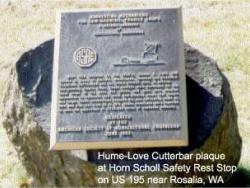
Near This Location In The 1930's James E. Love And Horace D. Hume Of Garfield, Washington, Invented The Flexible Floating Cutterbar And The Tined Pickup Reel To Harvest Low-Growing, Fragile Crops. These Devices Were Developed For The Local Crops Of Dry Peas And Lentils And Were Then…
Read More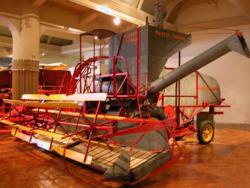
Designated A Historic Landmark Of Agricultural Engineering The Massey-Harris No. 20 was the First Commercially- Successful Self-Propelled Combine Used to Harvest Small Grains Under a Wide Variety of Conditions, World-Wide. Engineered By Thomas Carroll, Chief Engineer, Aided by Robert…
Read More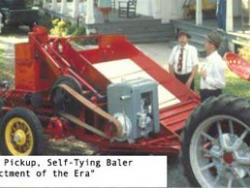
This machine is the world's first successful automatic pickup, self-tying hay baler. Its invention was a significant contribution to the development of American Agriculture. The baler was invented and hand-built in 1937 at Farmersville, Pa., a few miles from here. After testing and…
Read More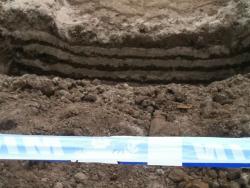
Historically, Farm Tillage Tools Were Designed Without Scientific Knowledge Of How Tools Work The Soil. Thus, A Tool Designed To Operate In One Soil Pulled By A Mule Might Not Operate Satisfactorily In Another Soil Or When Pulled By A Tractor At Higher Speeds. Traction And Flotation Problems…
Read More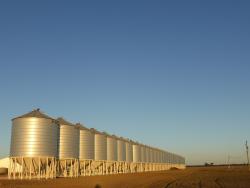
Prior to the development of circular, corrugated, galvanized steel grain bins, prefabricated, non-corrugated steel bins were used because of cost, portability, rodent resistance and waterproof features, but bin capacity was limited. In the 1920's, corrugated bins, which were larger in…
Read More

